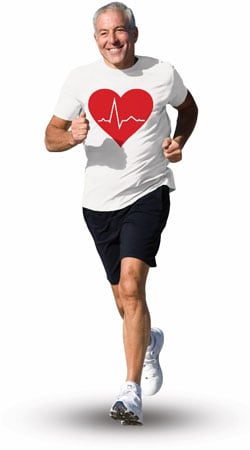CoQ10 is vital for life. It is made in virtually every cell of the human body and is essential to make energy.
PETER Francis, 68 years old, is an avid golfer and entrepreneur, but has recently found himself constantly sapped of energy and fatigued.
He thought maybe age was finally catching up with him.
Being a health-conscious individual who believes in regular exercise and eating healthily, he felt defeated and depressed. He couldn’t understand why he felt so drained when he has also been taking daily health supplements which included Coenzyme Q10 (CoQ10).
His cardiologist had recommended it to him a decade ago.
The practice of taking CoQ10 for energy and heart health is observed by many people worldwide. However, most are not aware that CoQ10 exists in two forms in the body.
The body makes the regular form (ubiquinone), and then converts it into the active form (ubiquinol), which then makes CoQ10 one of the most powerful lipid soluble antioxidants produced in the body.
The active form of CoQ10 has been shown to be more absorbable than regular CoQ10 in every clinical trial to date.
It is the predominant form of CoQ10 in a healthy body. About 90% of our plasma CoQ10 is in the active form.
Only the active form of CoQ10 is an antioxidant.
Since active CoQ10 is such a powerful antioxidant, it is easily oxidised in the air, and is therefore a challenge to keep stable in a dietary supplement.
Even though scientists and researchers have identified the active form, they could not produce a stable form outside the body. It took them more than a decade to stabilise the active form for use in supplements.
Hence, until recently, the only way to increase active CoQ10 levels in the blood was for the body to convert it from regular CoQ10, which research has shown becomes increasingly difficult as you age.
Both forms of CoQ10 are vital but have different roles to play in the body.
Basically, CoQ10 is vital for life. It is made in virtually every cell of the human body and is essential to make energy.
We need to produce enough energy for our daily activities, to keep our hearts beating, our brains thinking and limbs moving. Energy is also needed for maintenance and repair when cells get injured or to make new cells when cells die.
In addition to increasing energy levels, CoQ10 is a powerful antioxidant that protects the body from harmful free radical damage.However, once past 50 years of age, the body’s CoQ10 production not only drops drastically, but our ability to convert regular CoQ10 to the active form also diminishes.
The body has to convert regular CoQ10 into active CoQ10 for it to be used. This then affects the body’s ability to rejuvenate itself and protect against excessive free radical damage. That is why we feel tired and weak all the time.
Besides heart conditions, CoQ10 is also recommended for people who have diabetes. Researchers in Singapore found in one study that diabetics have approximately 75% less active CoQ10 compared to non-diabetics.
This study demonstrates that diabetics used up more of the active form of CoQ10 to combat free radicals.
Another study demonstrated that the active form of CoQ10 significantly improved HbA1c levels (which was due to improved function of the pancreas of type 2 diabetic patients, resulting in improved blood sugar metabolism).

As with diabetics, scientists found similar loss of active CoQ10 in people with liver disorders as these conditions increase free radical damage.
Researchers at the University of Tokyo showed that patients with hepatitis, cirrhosis and liver cancer all showed a decrease in active CoQ10 levels.
If you are past 50 years and feel constantly tired and weak, switch to the active form of CoQ10 supplements to help protect and re-energise your ageing body to help you stay healthier and younger at heart.
Check your CoQ10 supplement label, and if it states ubiquinone or ubicarenone, you are taking the regular form. If you are unsure, check with your pharmacist.

